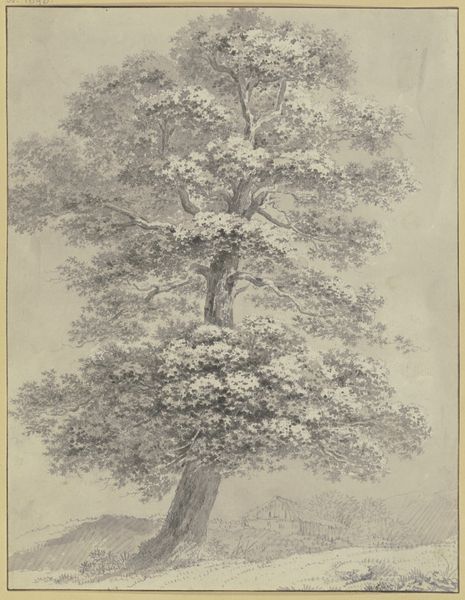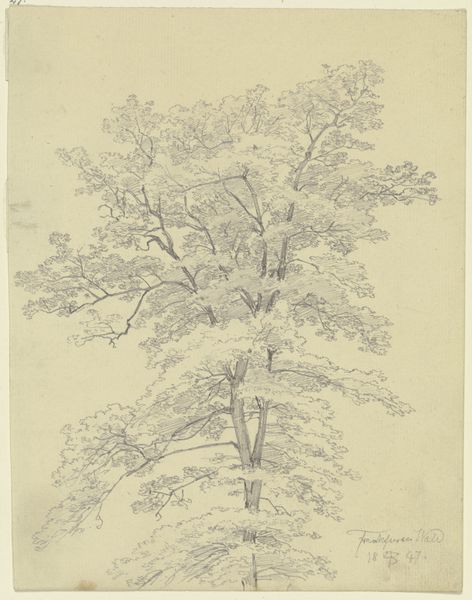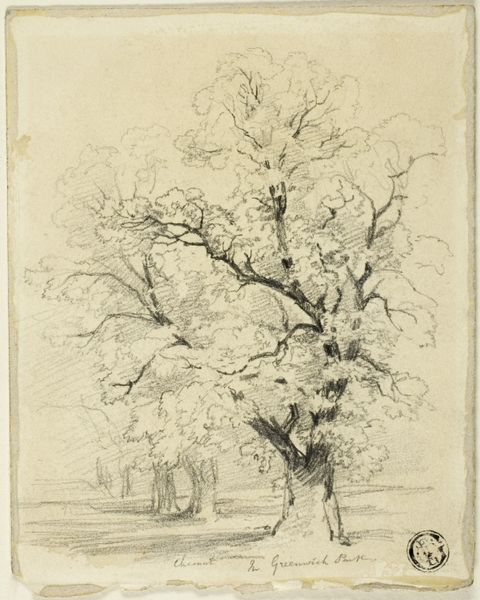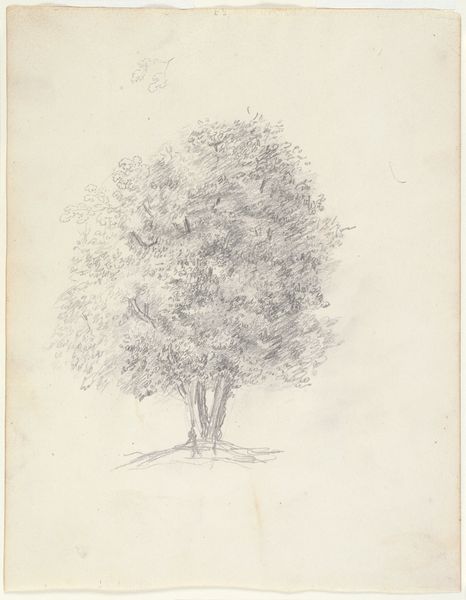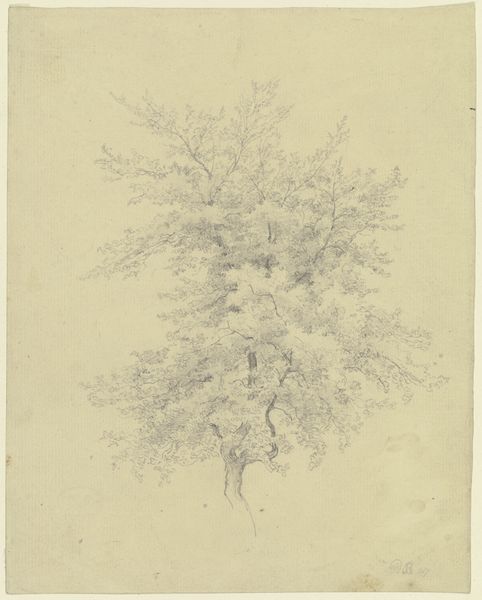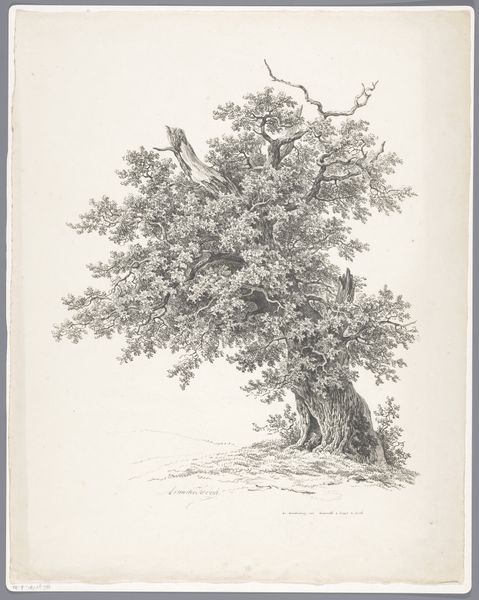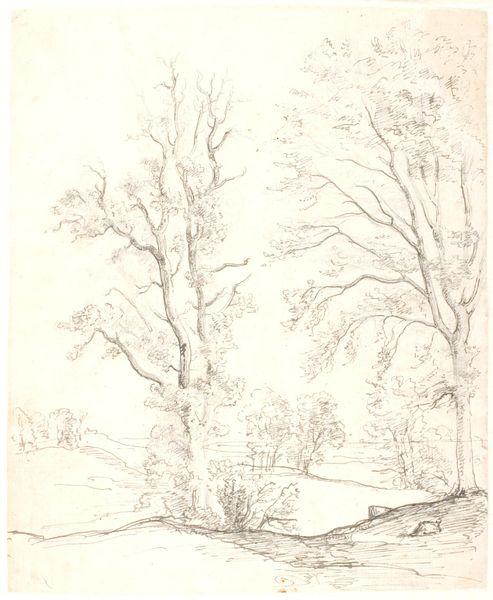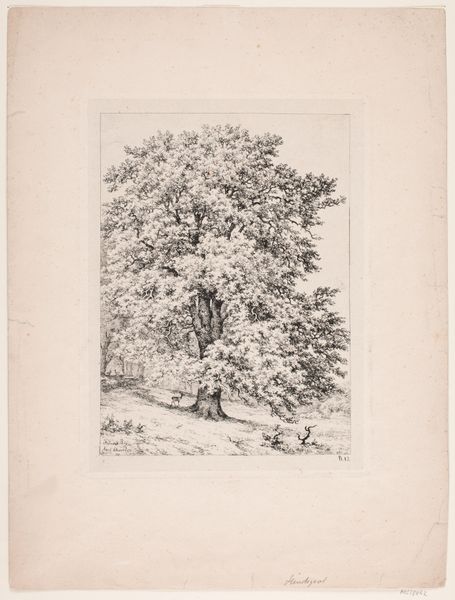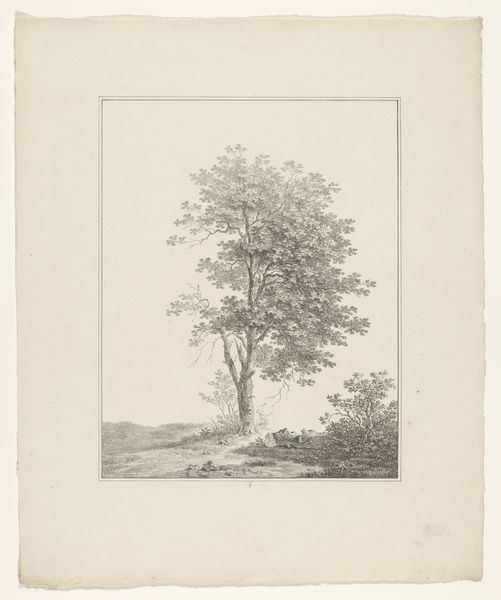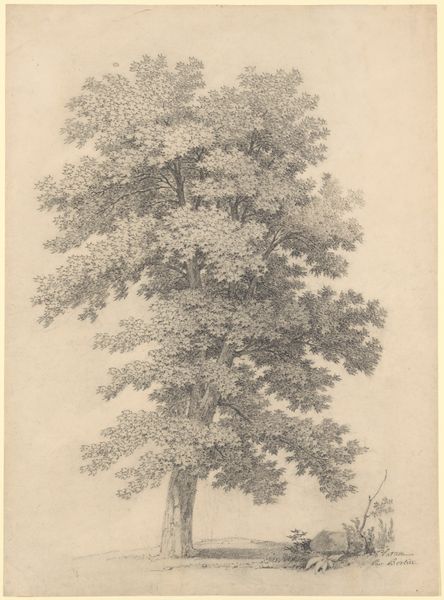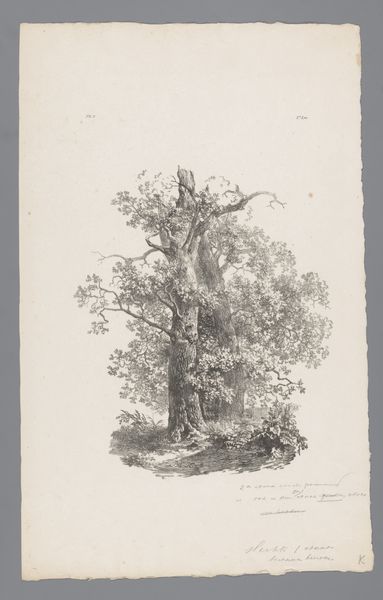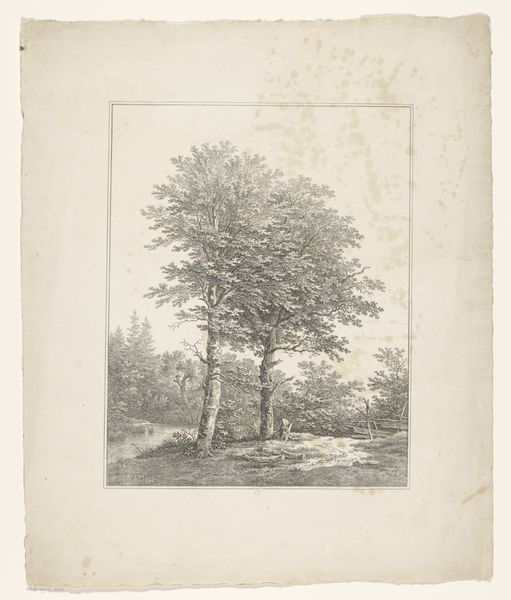
drawing, pencil
#
drawing
#
landscape
#
romanticism
#
pencil
#
realism
Dimensions: 298 mm (height) x 237 mm (width) (bladmaal)
Curator: Right, let's dive into this rather serene work. What strikes you first about this pencil drawing? Editor: Hmm, well, right away I’m drawn to the tree itself, this sort of lonely sentinel dominating the space. There’s something melancholic about it, but peaceful, you know? Curator: I do. This is “Parti fra en have,” or "View from a Garden," a work by Christen Købke, created in 1846. We find it now in the collection of the SMK, the National Gallery of Denmark. Considering Købke’s milieu, think about the role gardens played within 19th-century bourgeois culture. The garden, of course, acts as an intersection where nature and culture converge. Editor: Yes! That contrast hits me too. You have this meticulously rendered, almost photographic tree against the faintest wash of, well, "otherness" – what's lurking beyond the fence? Is that a church? It's like a half-remembered dream behind the imposing tree. Curator: Absolutely. Köbke’s art emerged during Denmark's Golden Age. What he accomplished with simple pencil strokes is to offer viewers the capacity to connect with place, but simultaneously hinting at what exists on the edge, the periphery. Köbke’s piece uses the trope of Romanticism yet veers towards realism, particularly in the foreground with this single tree placed strategically as a lens to look at a garden scene. We are placed, as viewers, as a part of the composition, situated perhaps at the window from the interior. Editor: Right, the detail is captivating, the textures almost palpable. It feels as though I can sense the rough bark and the delicate leaves all at once. But it's the scale that really intrigues me, it gives this little slice of nature monumental weight. Curator: It does ask questions about our place in the world. Thinking about today’s context, it resonates with urgent questions around sustainability, climate change and the interplay between built environments and our connections with nature. Editor: Looking at the pencil lines I see a beautiful sense of longing... I can almost hear the breeze whispering through the leaves. Curator: Agreed. This drawing by Köbke, even in its simplicity, serves as an important historical signifier of how we think about the representation of the natural world. Editor: Yes, that whispering breeze really helps bring to life all the possible histories, from the intimate and local, to a larger cultural understanding about place and identity.
Comments
No comments
Be the first to comment and join the conversation on the ultimate creative platform.
